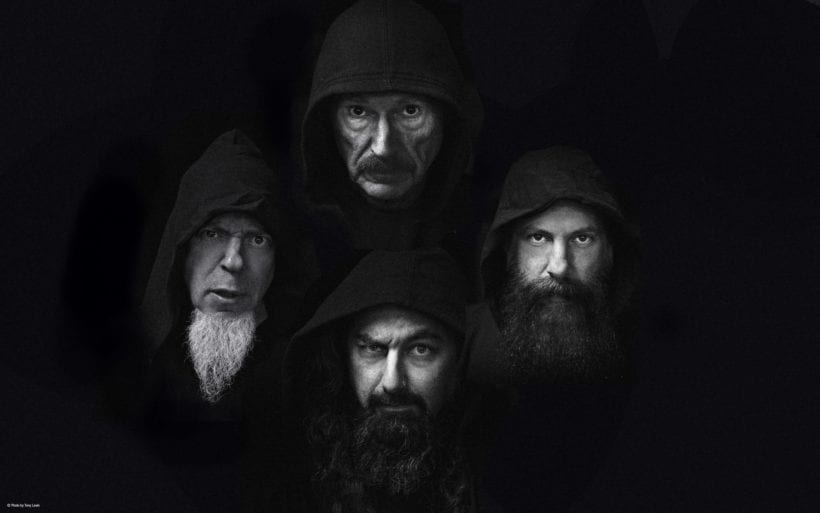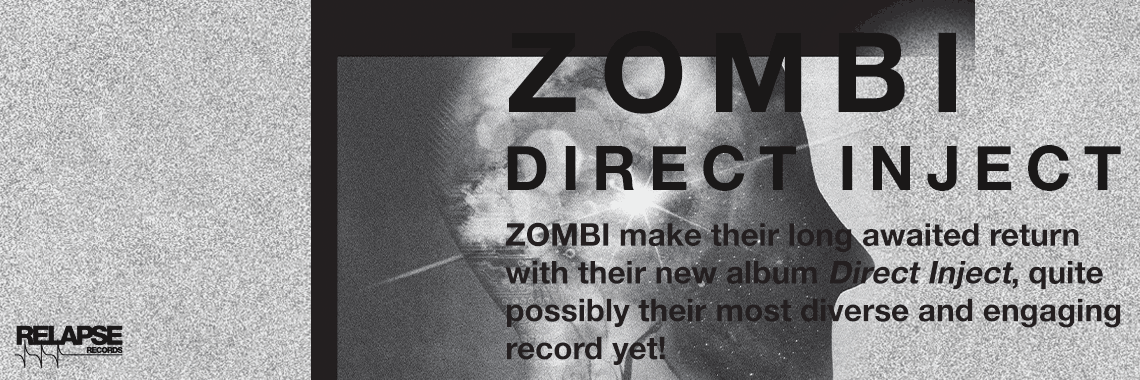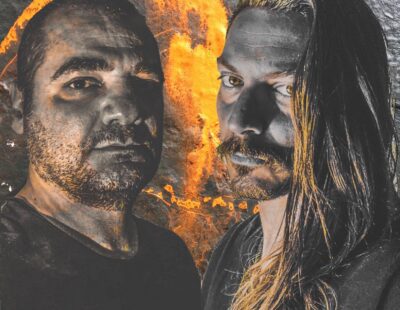
Liquid Tension Experiment are back. Twenty-two years after Liquid Tension Experiment 2 shocked, impressed, and paved the way for what would be future super-groups. The vision of drummer Mike Portnoy, eventually became Liquid Tension Experiment with guitarist John Petrucci, keyboard player Jordan Rudess, and bassist/Chapman Stick player Tony Levin coming along for roller-coaster ride of their professional and musical lives. Together, they crafted instrumental (and improvised) progressive rock pieces that were as wide and weird as they were deep and explosive. To wit, the song “Paradigm Shift” — off the first Liquid Tension Experiment album — quickly set the Americans apart from their respective bands at the time but also elongated the now-famous tail (of progressive rock) upon which the quartet were riding.
Liquid Tension Experiment 3 follows its predecessors with class, aplomb, and plenty of insane musicianship. Recorded at Dream Theater Studios while the global pandemic had everything and everyone on lockdown, the third Liquid Tension Experiment offers everything (and then some) to the ardent fanbase that’s stuck by the musicians for over two decades. They pull out an insane intro — “Hypersonic”. It’s been a long while since we’ve heard this level of musicianship unbridled by outside influence. Similarly, Liquid Tension Experiment break out George Gershwin piece, “Rhapsody in Blue,” respect it professionally but spin it like only Portnoy, Rudess, Petrucci, and Levin know how. All the familiar Gershwin themes are there, in vibrant technicolor, but they’ve been translated for today’s can’t-play-that hoi polloi. But the album’s stunning moment is its closing track, “Key to the Imagination.” For 13 minutes, Liquid Tension Experiment prove out why they’re one of the few to be able play, perform, and improvise at this level outside of, say, Free Jazz.
Decibel had the rare opportunity to talk to guitarist John Petrucci. We talked about his new solo album, Terminal Velocity, how the Gershwin piece evolved into the centerpiece of Liquid Tension Experiment 3, and how the pandemic made it all possible. Sometimes it’s the journey that matters, but this time it definitely was the destination.
With Liquid Tension Experiment 2 so far in the past—about 22 years—why did it make sense now to have Liquid Tension Experiment 3 come out of the darkness?
John Petrucci: We’ve been asked about LTE3 for such a long time now. It’s been 22 years since LTE2. But the main two questions I’ve gotten over the years are: when are you going to release your solo album and when is LTE going to follow-up LTE2? Well, I’ve done the solo album, Terminal Velocity. And now I can say I’ve done LTE3. I would say Liquid Tension Experiment has always been on our minds. The difficult thing with projects like LTE is that schedules are hard to link up. Everybody is usually on tour at different times. If we’re not on tour we’re at home, carving out however many weeks we need to write for our main bands. With the pandemic, everything was shut down. Everybody was home–there were no touring conflicts. Mike [Portnoy] had already played on my solo album here at Dream Theater Studios. We had the drum kit already set up and mic-ed up. We knew it would work. Mike and Jordan [Rudess] had been texting back and forth, like “Hey, let’s do this!” I was totally down, but wanted to finish my solo album first. Doing LTE3 at Dream Theater Studios made it really easy. All the factors gave us no excuse not to do it. So, we made it happen.
What was it like writing the songs together after all these years?
John Petrucci: It’s a very easy-going writing environment. Everyone is super-creative. We all love each other’s company. It’s a fun time, which is really important for something like this. I’ll bring in ideas — different riffs — and we’ll end up using some of it. Jordan did the same. Basically, the ideas we brought in were more like seeds to start a musical conversation. A lot of what we do stems out of improvisation. Actually, we did four big improvs when we first got together. Each one was a half-hour or longer. So, we pulled ideas from those pieces. The other part is being in a room together and bouncing ideas off one another, constructing the songs. We have a great chemistry. It all happens very fast. We have a lot of fun writing together.
When you’re improvising how do you prepare your mind for it?
John Petrucci: You have to open your mind. The biggest ingredient is listening. You’re making music together and ideas are coming off-the-fly. Some ideas are initiated by what you’re playing, while others are initiated off what someone else is playing or has just played. We’re reacting to what other people are playing, notes, chords, and progressions. You have to really listen. You have to be in the moment. You have to part of the musical conversation. It’s a lot of fun and it’s really interesting. I pull from my years as a musician — things I come up with on the spot and how the other guys are going to react to what I’m playing. There’s a lot of ear training in improvisation. There’s nothing inherently difficult about improvising, but if you don’t open your mind, listen closely, and then let it all go, it’s probably not going to be very rewarding.
John Petrucci: Yeah! We did that accidentally on the first album with “Paradigm Shift.” It’s the first thing you hear. It’s your first impression. We wanted to follow in that tradition on LTE3. “Hypersonic” is the starting gun to get the horses out of the gate. It sets the mood for the album. It starts the party. So, that was totally done on purpose.
You also continue the Chris & Kevin tradition. That is obviously still a fun inside joke.
John Petrucci: It is! Mike wanted to do it. “Chris & Kevin’s Amazing Odyssey” is all Mike. He and Tony [Levin] had some jams — just like on the first record with “Chris and Kevin’s Excellent Adventure” — that they wanted to use. Well, one of the jams — or an excerpt of it — was christened, “Chris & Kevin’s Amazing Odyssey.” I totally forgot why it was named “Chris & Kevin” until Mike reminded me recently. We had a photo shoot once and the photographer couldn’t get our names right. So, the joke continues to this day.
There’s also a playful side to Liquid Tension Experiment. “Rhapsody in Blue” comes out as fun and bright but still musically intelligent. The record has a wider color palette as a result.
John Petrucci: The opportunity to do a classic Gershwin piece for a live tour — Mike had suggested it, actually — eventually made its way a recording. When we played the song live, it made sense to extend it further in the prog-rock format. When we were talking LTE3, we thought, “Hey, not everybody heard that live version. What if we record it?” The arrangement is really cool. It’s such a recognizable piece by Gershwin that when you hear the arrangement in context of LTE’s own music — compositions, jams, and interludes — it all fits together. Stylistically, it’s right there with us. It’s one of my favorite moments on LTE3.
I do like that you’re bringing Classical music into the contemporary prog world. That’s obviously been done before, but these days Classical music needs a modern translation.
John Petrucci: The cool thing about doing that piece is that it’s so recognizable. Play any one of the melodies and people are going to know what that is. Everybody knows that piece. It’s been in TV, film, etc. That were able to take such a recognizable piece and bring forward with our context is a lot of fun. I know I keep using the word “fun,” but that’s the nature of the project. There would be no LTE albums if it wasn’t fun for us.
Well, this isn’t heavy metal or progressive metal. To lean on the darker, denser tenets of those genres probably wouldn’t make much sense. This goes back to the first LTE. The ability to smile is important.
John Petrucci: Well, we still smile a lot when we play in Dream Theater. [Laughs] LTE is all instrumental. Each instrumentalist can take the baton at any given moment. This is only our third record. We can take this anywhere we want. With Dream Theater, there’s a history, a catalog, a sound, a certain musical landscape to consider. When you break out of that, people tend to hear and feel it. They know. Not that there are rules to Dream Theater or LTE, but we kind of know what needs to be done or what will work. It’s not consciously motivated either. Rather, it’s sub-conscious. For example, I’ve been doing press for my solo album, now LTE, and we’re working on a new Dream Theater album. They all sound different. They all have their own musical identity. It’s crazy how that happens.
John Petrucci: Everybody got tested. We don’t live far from one another. So, it’s more about taking a drive. There were no flights involved. At the time, everyone was doing the same thing. We were all on lockdown. We weren’t taking risks. So, after we got tested, we got into the studio–which is a tiny bubble of just us–and banged it out. Dream Theater Studios isn’t a public studio. There’s no in/out traffic of what I’d call a traditional recording studio.
Did the pandemic influence the new songs in any way?
John Petrucci: No. We were in a different space. I did my solo album between March-May of last year. It wasn’t reflective of what was going on outside. There’s no despair or darkness in it. My solo album is just my personality on guitar. With LTE, it’s all of our personalities on our respective instruments. Both projects are instrumental. There are no lyrical topics to ponder or communicate. The new Dream Theater will also not be exploring themes of the pandemic. We want to escape all the social, political, and medical things associated with the pandemic. It’s music–let’s get away from all that!
Was there any inclination to add vocals — even a non-traditional approach — to Liquid Tension Experiment 3?
John Petrucci: No, not at all. The topic has never been brought up. We’re an experimental instrumental band. That’s what we are.
How did the editing process work? I guess there’s a point where the improvisation has to end logically (or illogically).
John Petrucci: There’s no self-editing. For what we do, it doesn’t make a lot of sense. The songs simply flow out of us the way they’re intended to be. Instrumental. Anything goes. We’re not trying to fit parameters–like having a single, for example. Some of the songs will feel more epic, thematic things that make different appearances or take time to develop. Sometimes it feels right to extend the music. Sometimes it doesn’t make sense to extend our music. The duet between Jordan and me on “Shades of Hope” wouldn’t feel right if it was 10 minutes long. The style of the song doesn’t call for that. The song tells us what it wants to do. We’re all in the same headspace, so we let the song carry us, if that makes sense.
I’ve always thought it interesting when bands talk through non-traditional song structures.
John Petrucci: The sections just develop. It’s not being afraid to let, say, the intro take its time to develop. Or, if the song gets moody and sometime later, the mood comes back in. We don’t want to restrict ourselves, really. If it’s a dramatic landscape, it’s the song telling us how it should develop and continue. The whole thing with stuff like that is you have to keep it interesting. The Gershwin piece is an epic from a time-stamp standpoint. There are so many themes, sections, and movements, but it’s never boring. With instrumental music, it’s always important to be conscious of that. Long periods of boring, meandering music is something nobody wants to listen to.
Similar question but when it comes to instruments are the members of Liquid Tension Experiment thinking of other instruments/sounds? There’s a universe of instruments out there.
John Petrucci: No. If anything, that will come from the keyboard department. Jordan can do everything from traditional key-based instruments to all of the above — you name it! That’s in his department. The basic — the core — is our instruments and how we play them. There’s no need to bring any outside instruments into LTE.
Tell me about the bonus disc, A Night at the Improv?
John Petrucci: The bonus disc is the jams I talked about earlier. Each jam session was like 30-40 minutes. Had we included them in full it would’ve been another two-and-a-half hours of music. So, we did excerpts of the jams. We pulled five different excerpts. That’s the fly-on-the-wall of what it sounds like when we get together and jam.
** Liquid Tension Experiment’s new album, “Liquid Tension Experiment 3,” is out now on Inside Out Music. 2xLP and 2xCD are available from Century Media HERE. Chris & Kevin’s Outstanding Adventure has begun. Join them!






